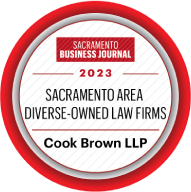Are You Sure?
You know the saying: no good deed goes unpunished. Nowhere is that more apparent than in California where legal interpretations continue to make it more complicated to give employees added benefits such as flat sum bonuses. In a recent decision, the California Supreme Court held that in determining an employee’s regular rate of pay for overtime, which included a flat sum attendance bonus for working unpopular weekend shifts, the divisor used to calculate the per-hour value of the bonus should be the number of non-overtime hours actually worked during the pay period. The divisor should not also include overtime hours worked, which would result in a lower regular rate of pay (and thus overtime pay) for employees. (See Alvarado v. Dart Container Corporation of California, February 5, 2018).
Flat Sum Bonus Affects Overtime Calculation
In Dart, a former warehouse worker brought a putative class action seeking overtime pay. Each putative class member was allegedly paid on an hourly basis and received an “attendance bonus” if he or she was scheduled to work a weekend shift and completed the full shift. The amount of the bonus was a flat sum of $15 per day of weekend work, regardless of whether the employee worked in excess of the normal work shift on the day in question. The dispute in this case arose because the attendance bonus must be factored into an employee’s regular rate of pay so that the employee’s overtime pay rate (generally, 1.5 times the regular rate of pay) reflects all forms of regular compensation that the employee earned.
The employer had reasonably relied on a federal regulation explaining how to factor a flat sum bonus into an employee’s regular rate of pay since there was no California regulation on point. But in reaching a different conclusion, the California Supreme Court noted California’s longstanding policy of discouraging employers from imposing overtime work. Recognizing that California’s overtime requirements are more protective than federal law, the court noted that California laws are to be “liberally construed in favor of worker protection.” As such, the court concluded that the “flat sum bonus at issue here should be factored into an employee’s regular rate of pay by dividing the amount of the bonus by the total number of non-overtime hours actually worked during the relevant pay period and using 1.5, not 0.5, as the multiplier for determining the employee’s overtime pay rate.”
What Does This Mean for Employers?
Employers should immediately evaluate their overtime pay practices. This requires looking to all forms of remuneration including flat rate bonuses and other incentive pay. An employee’s “regular rate of pay” for purposes of Labor Code Section 510 and Industrial Welfare Commission (IWC) wage orders is not the same as the employee’s straight time rate (i.e., normal hourly wage rate). Regular rate of pay, which can change from pay period to pay period, includes adjustments to the straight time rate, reflecting, among other things, shift differentials and the per-hour value of any non-hourly compensation.

